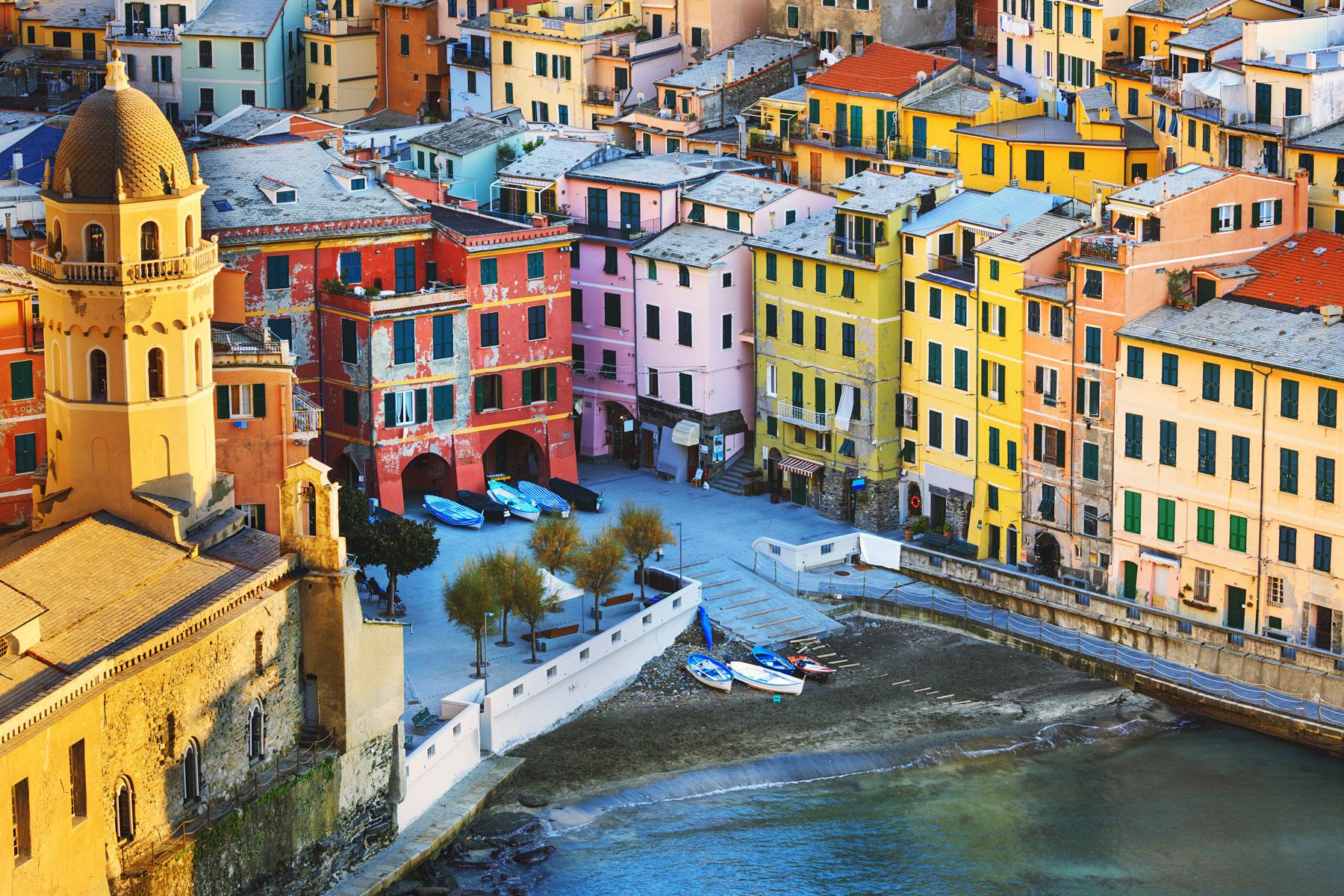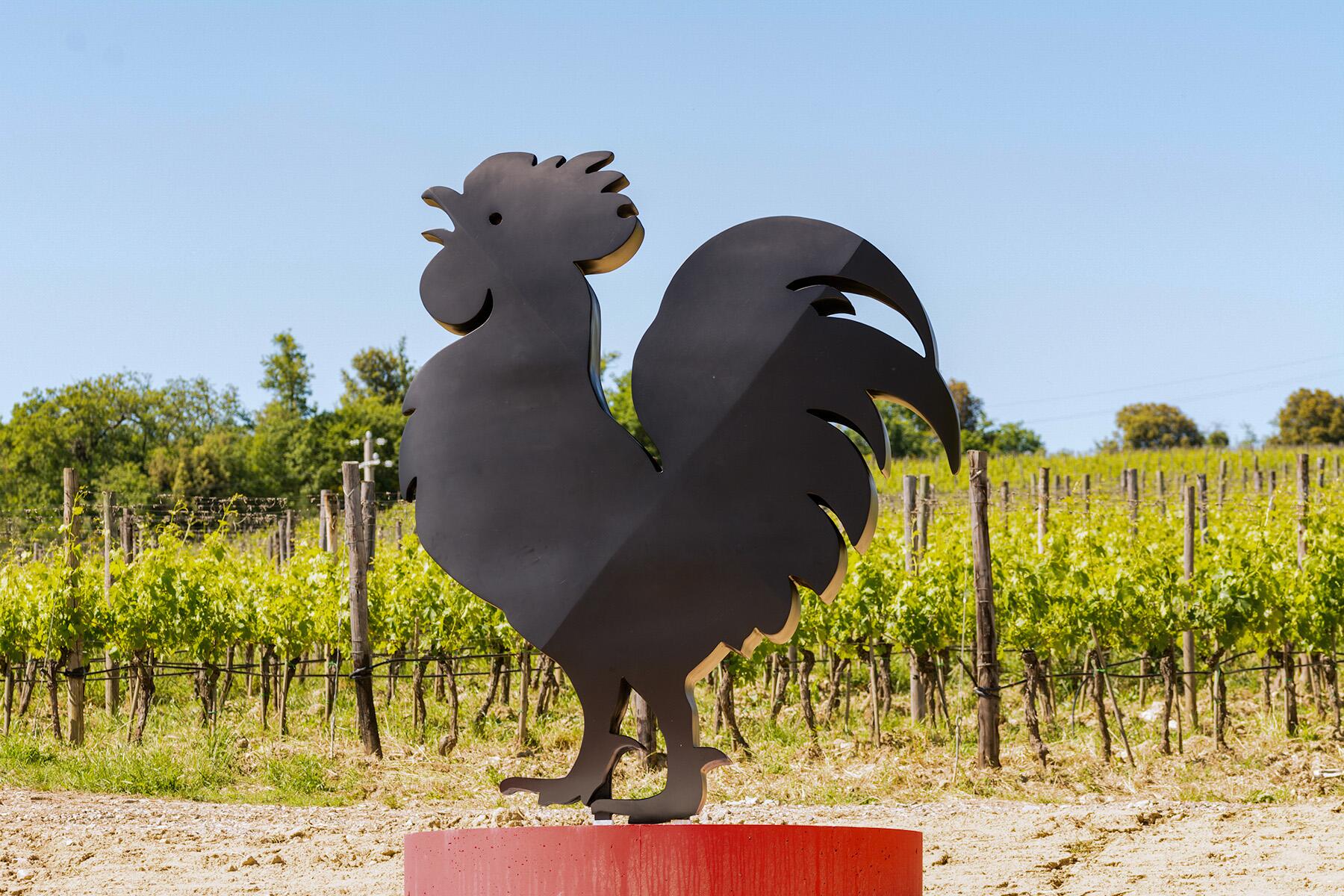The legend of the Chianti black rooster and how it defined a region.
New York and Boston. Los Angeles and San Francisco. Berlin and Munich. With no exception to the category of competitive neighbors, Florence and Siena are true rival cities. Instead of disputing who had the best sports team or the greatest nightlife scene, Florence and Siena spilled blood in merciless battles in the fight for claimed land.
This age-old rivalry can be seen all over Chianti, a region in the heart of Tuscany, in the form of a black rooster. Metal statues immortalizing this animal are in the central piazzas of just about every medieval town in the region, and a silhouette stamp is on almost every wine bottle produced in the region. I first bumped into it while staying at Villa Ardore. Its owners, Christian Scali and Stephen Lewis, purchased Cosimo, their very own black rooster. And while Cosimo is the conqueror of the chicken coop, he has a distinct historical significance.
But what does a rooster have to do with a territory war? Well, after several hundred years of spilling blood, Siena and Florence grew tired of their feud. So they agreed on an unusual solution: they would settle their differences with two roosters.
The Legend of the Florentine Black Rooster
To create a permanent border between the regions, the rulers of Florence and Siena decided to each have a knight set out in the morning and ride toward each other. Wherever they met—assuming both knights would cover an equal distance—would mark the official territory line. But in a time predating cell phones and alarm clocks, syncing the waking schedule of each knight posed a challenge.
Recommended Fodor’s Video
Enter the rooster–the original alarm clock.
Siena chose a white rooster to wake up their knight, and Florence chose a black rooster for theirs. However, Siena made the mistake of feeding their rooster a hearty meal, which meant it enjoyed a peaceful night of rest and woke up right at daybreak. At the rooster’s early caw, the Sienese knight rode toward Florence.

On the other hand, Florence didn’t feed their rooster for multiple days. The bird, hungry and restless, began squawking hours before dawn. The Florentine knight woke up much earlier and got a head start from his Sienese counterpart. Thus, he covered more distance and claimed more land for Florence. Thanks to one hungry and disgruntled rooster, Florence earned itself a massive slice of territory and forever portrayed the rooster as the region’s mascot.
A Rivalry to Last a Millennium
Florence is iconic; it’s one of the first places to come to mind when you hear the word Italy. You think of the David, Botticelli, and the birthplace of the modern Italian language. You think the cradle of art, literature, and performing arts. The city was also the residence of some fairly significant people in history. Dante, da Vinci, Galileo, Michelangelo.

What about Siena? Florence’s neighboring city is fewer than 54 miles away and has its separate rights to fame. The city contains a historic UNESCO-registered center surrounded by a 1,000-year-old wall. Siena hosts a bi-annual horserace called the Palio di Siena.
Perhaps it’s plausible that the popularity of Florence had risen alongside its expansion. The bigger the city, the more space for subcultures and unique communities. The more land, the more that can be cultivated. Among the most notable regions claimed during the knight’s race was Chianti, about 20 miles from the city.
As Iconic as Chianti Classico
Chianti is a region of Tuscany revered for its wine by the same name. Since its first production hundreds of years ago, Chianti wine has become so popular that even Hannibal Lecter gave it a callout. It’s a joke, of course, but the popularity of Chianti is as honest as it comes. Chianti is by far the most famous Italian red wine sold in America, and the region produces approximately 40 million bottles each year. This means only one thing: if you’ve seen a bottle of Chianti Classico, you’re already familiar with the black rooster.
An association of winemakers in Tuscany formed the Chianti Classic Wine Consortium in 1924. The consortium’s mission statement is simple: to protect the integrity and preserve the meticulous vinification process of Chianti Classico, distinguishing this brand of wine as it’s known today. You might recognize a familiar friend right in the center of their emblem: il gallo nero—the black rooster.
Chianti Classico is internationally loved and locally fussed over. When asked about the significance of the black rooster and what it means for local wine production, Giorgia Targetti of Poggio Amorelli Winery says, “[The black rooster] makes it possible to distinguish a wine that has been produced within the territory of Chianti Classico from those that have been produced outside of the Chianti Classico territory.”
This means that if you see a black rooster on the foil topper of your wine, you know you’re about to drink an authentic bottle of Chianti Classico, perfected by generations of vintners.
Get the Most Out of Chianti by Following the Rooster
While the accuracy of this legend is possibly debatable, one thing is for sure: the rooster made its permanent imprint on the area. Even as hundreds of years have passed, the knights long forgotten, the black rooster still reigns supreme as the mighty land conqueror. Nowadays, you’ll find the black rooster on just about anything in Chianti, from the magnets in tourist shops to the sandwich boards outside of restaurants.

The best way to explore Tuscany is by car. Luckily, most towns in Chianti are connected by the Chiantigiana, a single road that stretches between Florence and Siena. Cruise through olive groves and vineyards with vintage Fiats from Villa Ardore. Trust me, the drive will be just as enjoyable as the bottles of Chianti Classico you’re sure to sample.
Check out Poggio Amorelli, Chianti’s quintessential winery that offers a sumptuous wine tasting and fare. Targetti assures us, “[Poggio Amorelli’s] goal is to give the visitors that come here the perfect Tuscan experience, so the pairing of good wine with local food in a beautiful landscape.”
Towns like Castellina and Greve sit along the Chiantigiana and have large metal statues cut into the shapes of roosters. Visit Panzano and eat at Macelleria Cecchini, the restaurant owned by the famed butcher Dario Cecchini. Inside his shop, you’ll find a wide selection of kitchen items and infused salts that make great souvenirs for the wannabe chefs in your life.
Go a little further down the Chiantigiana, and you’ll reach San Gimignano, one of Siena’s most popular tourist destinations. San Gimignano is the Town of Fine Towers, with medieval architecture and building peaks that jump up from the stone-clad skyline.
If you want to explore Tuscany the right way, put away the GPS and follow the trail of black roosters.




